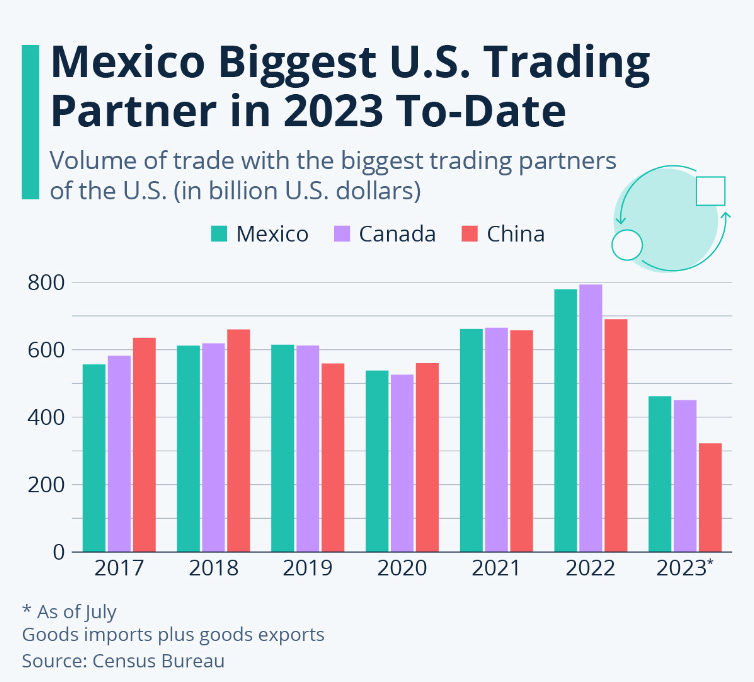Over the past few decades the notion of hyper-globalisation has been a powerful one. However most trade happens between countries that are geographically close to one another. A tendency towards regionalisation is the reality of global trade patterns.
History has taught us that certain countries have benefited immeasurably from their geographic location. For example, Bolivia has struggled to thrive economically compared to its neighbours in large part to it losing access to the sea during the War of the Pacific in 1879, when Chile claimed Bolivia’s entire coastline. Whilst Chile benefited greatly from hosting the port town of Valparaiso which was, until the Panama canal was built in 1914, the main port of call for anyone travelling from the Atlantic to the Pacific and vice versa via Cape Horn. The port was known as the Jewel of the Pacific or little San Francisco by sailors. Notably Valparaiso had one of the oldest stock exchanges in South America, which gives you a sense of the cosmopolitan nature of the port in the late 1800’s.
If you are interested in this topic, a good place to start is the brilliant book Prisoners of Geography.
In the case of Mexico, its geographic reality is very fortunate indeed. Sharing a border with the United States is an advantage difficult to overstate.
As of July 2023, Mexico is now the biggest trading partner of the United States, with around $462 billion worth of goods exchanged between the two countries in 2023. This is ahead of Canada's $450 billion and China's $322 billion.
The United States as the biggest economy in the world has traditionally been at the centre of global trade flows.
China had taken a front seat as the partner the U.S. traded with the most since 2015, but this changed in 2019. The U.S.-China trade war which saw both countries leverage tariffs against one another during the Trump Presidency finally took its toll and saw China drop into third place of the US trading partners.
With US companies now looking to protect themselves against political and economic tensions with China, they are looking to move their supply chains closer to home. Much has already been written on the topic US companies near-shoring their manufacturing to Mexico, such as Tesla, but suffice to say, this trend will only serve to integrate the US and Mexican economies further in the decades to come.
So what does this mean for the technology sector in Mexico?
This growing trend of commercial alliance between the US and Mexico is increasingly evident in the startup and big tech world.
Spotify, Netflix and Uber amongst many of the other big tech firms have gained remarkable market share in Mexico and the wider region due to the continents high levels of digital consumption. This commercial appeal has been compounded by the depth of technical talent that is present in Latin America, which has led to many developer hubs being set up by Google and Meta in the regions capital cities.
Emerging tech hub - Mexico City is fast becoming a hotbed of entrepreneurial activity. It is arguably now the de facto capital of the Spanish speaking tech world. Spanish speaking entrepreneurs from across the continent are now voting with their feet. Increasing numbers of budding entrepreneurs are choosing to migrate from Bogota, Santiago, Buenos Aires and Lima etc to Mexico City to build their company in the largest Spanish speaking market on the continent.
This makes sense. We know that for venture backed companies to gain significant scale, they need a large market of consumers and businesses to sell their products and services. It’s no accident that many of the worlds largest companies are from two of the worlds largest markets, the US with a population of over 330 million people, and China with a population over 1.4 billion.
With Mexico hosting a population of over 120 million people and with a GDP only second to Brazil’s on the continent, it is logical to launch a business in a large addressable home market.
Proximity to Capital - The other key ingredient to a thriving Mexican tech ecosystem is its proximity to the US venture capital market. By simply being close to the main VC hubs of the US has been a big advantage to Mexican startups looking to raise capital. Many US funds now have investors either permanently based in Mexico City or travelling down often.
Scott Galloway proclaimed in his Provocative Predictions at South by South West Festival 2022 that the next ‘it’ city of North America is Mexico City for 3 main reasons.
Density is equal to opportunity - whether that’s around company building, dating or creativity. Mexico City has 22 million people, compared to 20 million in NYC and 13 million in LA.
Proximity - 2.5 hrs to Austin, 3 hrs to Miami, 4 hrs to LA, 4.5 hrs to NYC, 5 hrs to SF. Mexico City is easily accessible for the increasing flow of talent moving between the tech and capital hubs of North America.
Liveability - It is no coincidence that the tech hubs of the world have developed in cities that are objectively nice places to live with a high quality of life. Mexico City fits this mandate.
So in summary, while of course there are many other drivers that contribute to a country’s economic growth, and equally many reasons why some countries have not yet realised their full potential. I would argue that geographic reality often plays a bigger role than we realise or like to admit.
Until next time.
Saludos,
Archie, Bernardo and Victor
If you are interested in learning more about what we are building at Nascent, we would love to connect!
Archie@nascent.vc
Linkedin






